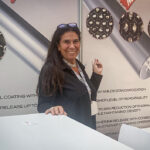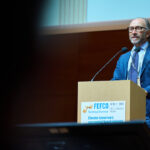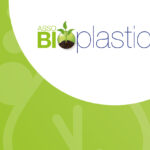1935/2004 and 2023/2006: these are the references of the EC regulations that underscored the meeting on the offset printing of food packaging, organized by Sun Chemical in early June. Despite the technicalities imposed by the subject, it was a good opportunity to see the packaging industry join forces on a vital issue such as safety, united in the knowledge that prevention is better than…
Stefano Lavorini
«The inks applied on the side of materials or objects not in contact with the food product must be formulated and/or applied in such a way that the substances from the printed surface are not transferred to the side in contact with the food product…». It may seem strange but a lot of basic things like this, that one tends to take for granted, were repeated with the utmost diligence and contextualisation during the meeting centered on the safety of food packaging, offered by Sun Chemical for professionals last 8th June in Milan.
The meaning and success of the undertaking lay in the evermore pressing need, as borne witness to by the participants, to share information and knowledge in order to increase transparency and faith between the parties of this great world, ranging from materials producers to the users.
This was also stated at the start of the proceedings by
Fabio Deflorian, CEO of Sun Chemical Group, who declared his company’s commitment to be even closer to converters and users, working in partnership and intervening on a day-to-day basis in an open and constructive manner.
Here follows a summary of the talks given.
Eugenio Cavallini, CEPI, outlined the European guidelines on paper and cardboard for food contact packaging.
Three the topics dealt with.
Firstly, the lack of specific regulations for paper that has led the industry to define and adopt voluntary measures (self commitment/regulation). Among these, the Handbook for the manufacture of paper and paperboard for food (Industry Guidelines), which enables compliance with Regulation 1935/2004 and CEPI GMP, written specifically for the production of paper and based on real criteria for risk assessment.
Another aspect that has attracted public attention is the increasing desire and willingness of stakeholders to cooperate along the chain to define the voluntary measures and the need to involve an increasing number of actors, hitherto marginal, specifically the food producers.
Third theme, the refinement of risk management activities, which go by the name of Correction Factors, Biological testing and Facet project. This latter project, that has been proposed to estimate the exposure of European consumers to food additives and flavorings and substances contained in packaging, will be completed in September and will develop models for the calculation of potential migration from materials (IASs).
Bernhard Fritz and Paolo Caiani entered into the specific characteristics of the inks and their characteristics regarding food contact, making it clear that it is not sufficient to comply with Community legislation (in particular ruling 1935/2004) but that solutions in matters of safety have to go beyond that, anticipating future scenarios.
Having defined the concept of migration they referred to the fact that the potential sources of transfer of the food substances are numerous and that the use of low migration inks and lacquers is not in itself a guarantee of safety. It is in fact necessary to evaluate the type of migration (whether in physical or in gas form), the possible sources of materials that can migrate, the limits for specific substances, the characteristics of the food product and the level of safety required as each case has it.
It is technically feasible and economically affordable to design, produce and sell safe cellulosic packaging, provided it is properly designed, the materials and solutions appropriately selected, the process properly handled, creating a climate of collaboration and faith between suppliers and customers.
As far as traditional oil-based offset printing inks for paper and cardboard are concerned, the state of the art at Sun Chemical is represented by the of low migration and low odor SunPak series (these are inks based on raw materials such as especially modified resins, polyesters with a high molecular weight or derived from vegetable oils).
Also underlined the important role UV and EB polymerisation curing inks have in the production of food packaging, with details explaining the difference between perception and reality of these products.
In particular it was emphasized that the materials printed with UV and EB inks have a low organoleptic impact and reduced migration potential, especially in the case of low migration products manufactured by Sun Chemical, starting from carefully selected raw materials from controlled suppliers.
Heinz Traussnig, Mayr-Meinhof, explained how cardboard for food packaging use is manufactured.
Maximum attention to the control of raw materials, the process and finished product, which also extends the analysis of microbiological charge.
The speaker focused on the problems of cross contamination and migration of contaminants from transportation to primary and secondary packaging as well as on the barrier characteristics offered by the Mayr-Melnhof lacquered foodboard named Karton against mineral oils and other substances.
Davide Biancorosso, L’Accademia del Poligrafico, presented a summary of the criteria to consider when designing food packaging, bearing witness to the complexity of the matter and the multiple knowhow that needs to be fielded.
Antonino Maggio, National Institute for Health, reviewed the existing legislation by invoking the need – even in the case of materials such as inks not subject to specific regulations – that products are manufactured respecting the general rulings, more specifically EC Regulation 1935/2004 and EC Regulation 2023/2006.
Valter Rocchelli, Ircpack, explained that validating an ink and/or a print job entails demonstrating that the finished object is in accordance with standards in force governing food contact materials.
To demonstrate that the packaging will not yield anything dangerous from an organoleptic and toxicological standpoint one however must go beyond the analytical tests laid down by law for each single material. This means that risk assessment through sensory and instrumental analysis must be carried out. He then presented an applicative example of "low migration" offset ink which revealed no criticalities.
Rocchelli drew attention to the fact that the GC/MS methods are highly sensitive but do not detect compounds with high molecular weight analysable with other techniques (HPLC/DA, HPLC/MS, HPLC/MS/MS).
You have to know what you are looking for and what has been put in the ink (or in the adhesive). Along these lines a greater collaboration with raw materials producers is essential (if need be including confidentiality agreements).
Maurizio Bonuomo, for the occasion representing Aidepi, brought to bear the point of view of the food industry. The fundamental aim must be to increase the knowledge on materials and their interaction with food, being aware of the fact that all the components of the food chain must consider safety as their first priority.
Food safety cannot only be obtained by legal rulings or by controls, but by implementing tools such as risk assessment. Here the industry plays a highly important role in improving communication, transparency and cooperation.

"Designing safe packaging: Best Practice Guide" is an interesting and well-devised publication brought out by Sun Chemical. This is a guide for printing food packaging with conventional offset and UV and EB curing inks and varnishes. We recommend it as essential reading.











